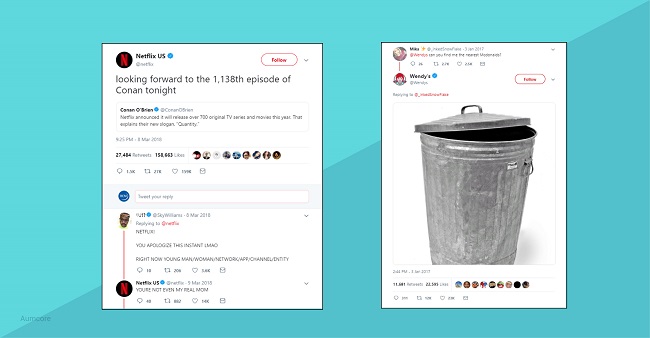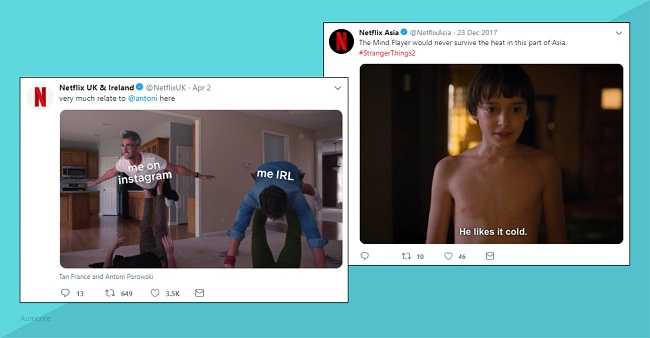If your products were riddled with holes or defective, there’s just no way you would ever try to sell them to customers, right? Likewise, if your employees had bad attitudes and negative tones, you wouldn’t want them to speak with your customers and imparting a negative brand image. This is why a brand’s voice is so important.
According to Slideshare, 80% of consumers said “authenticity of content” is the most influential factor in their decision to become brand followers. Forbes also notes that consistency in brand presentation across platforms increases revenue by up to 23%. These brand voice statistics show us that the way you present your brand to consumers plays a huge role in business and consumer relations. After all, the same way you want your products to be presented and displayed in their best form is the same way you should want to present your company’s ideas, values and culture.
Crafting Your Brand Voice
Creating a consistent brand voice means understanding the persona you want your brand to embody. In your business’ early stages, your marketing team probably created buyer personas for your target audience. Now you need to create the same kind of persona, but for your own brand instead. When communicating through social media, articles, blogs, and any other form of branded content, you need to ask yourself: How do I want my brand to express itself? You can brand your business with images like infographics and take an informational approach, or you can even make memes that add a lighthearted touch. Both options portray a very different brand voice. What you want to keep in mind is the kind of language used in branded content. In other words, how formal are you looking to make your brand? Similarly, how informal would you like your content to be?

If you’re a law firm using words and phrases like “aiight” or “it’s lit,” chances are good your associates won’t be taken seriously. But if you run a hip-hop culture magazine and you’re not using those words or phrases, and instead try to keep things formal and proper, your audience will likely lose interest in you. Your brand’s voice is how your company speaks with and to your target consumers. It’s natural that the language or slang your customers use would appear on your content as well because it shows that you understand their culture. You want your customer voice in branding. Understanding your audience is a key component in the early stages, when you’re still learning how to develop a brand voice. You want to create a brand voice that shows your brand is a part of a bigger community.
For companies looking to keep a flexible brand voice that can also maintain global consistency, you want to create a brand voice style guide for your employees to follow. This will help define your brand to your team and can act as a reference when they’re unsure what kind of language to use. Do this by creating a chart that shows general responses expected of your brand representatives in different scenarios. For example, in an email or in an in-person meeting. This will give your team an idea of the kind of language they should be using from a branding perspective. Make sure to keep in mind what we talked about in the section above, though! Cater your style guides to different continents and keep it relevant. What’s popular across North America might not necessarily translate to what’s trending in Asia. Be conscious of your consumer and how the different audiences worldwide will receive your branded content.
The Difference Between a Brand’s Voice and Tone
A brand’s voice is the language they use to communicate with their audience. A brand’s tone, on the other hand, can be likened to its personality. For example, consider luxury brands like Louis Vuitton. With these higher-end brands, the tone of voice in design tends to be a lot more formal, which allows them to communicate a more opulent lifestyle. When you think about it, their approach makes sense because their target audience appreciates and responds to that kind of language and tone. This is, or rather should be the norm for all brand. Their personalities in all their written content, whether it be on their website or on social media, should be consistent. Take Netflix and Wendy’s. Both of these brands have integrated an element of millennial humor into their social media channels because they know that’s what appeals to their target audience. Their voicing is a lot more edgy and has a lot more attitude than a luxury fashion brand, and that’s okay!

Looking at a spectrum with Louis Vuitton on one end (formal), and Netflix and Wendy’s on the other (informal), determine where you want your brand to fall. Consider how your audience interacts with your brand if you went either way. A great asset to social media is that you can also play around with your tone to see what works best for your followers. Even on an international level, Netflix maintains its humor and snarkiness with regards to its Twitter content.

You can choose to keep all things consistent, but remember to also make it relevant. Look at other international companies as brand voice examples to see how they differ in their social accounts, or even on their website content based on the region of the world they’re speaking to.
Understanding the Challenges
Developing and maintaining a brand voice is hard work. You need to be consistent across all channels because you’re representing your brand. Below are a couple challenges you may face along the way and how you can overcome them:
- Consistency:
Being consistent with your content, language and tone is easier said than done. With omni channel marketing in today’s digital landscape, it can get pretty difficult.
Aaron Schwartz, Founder of Modify Watches says “[p]umping out relevant content to fans is a must, which often means you’ll have different teammates telling your story on your blog, Twitter, Facebook and newsletter. Create a style guide, and make sure writers follow it.
- Maintaining your Core
With social media comments and the pressure from the internet to stay relevant, business owners and marketing leaders can easily get washed up in a wave of trends that doesn’t exactly align with who their brand is. Remember to let your brand remain true to itself during these times.
Seth Talbott, Founder of AtomOrbit, says that “[t]oo often, companies chase trends and get distracted with the latest shift in the marketplace or current threat for a competitor. Above all else, you need to make sure you have thoroughly thought through who you are and why you are the best solution for your customer.
- Authenticity
Even brands with the best of intentions can still make mistakes. Authenticity as a brand is something that has become paramount in today’s society. This is the most important component when you’re determining how to develop a brand voice for your company. Consumers want to know the brands they love are socially aware and responsible. But most of all, they want to know that a brand is being real with them.
Sunny Bonnell, CEO and Co-Founder of Motto, says “[g]rowth creates change in every company and forces it to evolve. Sometimes it strengthens the brand, but quite often, it’s a series of smaller shifts that can cause a brand to lose its way. Brand leaders have to make a conscious effort every day to keep the brand focused on its deeper purpose, authentic story and core values. Maintaining authenticity is the secret to consistency.
Takeaways
It’s our hope that this blog post has shown you the importance of a brand voice and different ways you can create a flexible style that maintains global consistency. You want to be able to let your brand express itself with your consumers while also being authentic. It’s no easy task, but it’s not impossible! Here are the top takeaways from this post one more time:
- Understand the language your audience uses and don’t be afraid to apply it to your brand’s voice
- Create a brand voice style guide that anyone on your team can use for different scenarios
- Determine what you want the tone of your brand’s voice to be (humorous, edgy, dark, formal, etc.)
- Understand there will be challenges you face, but there are also best practices and methods you can use to overcome them
If you’re still unsure as to how to develop a brand voice, the Aumcore team can help guide you with our brand identity services. As always, good luck!





Tell us your thoughts in the comments